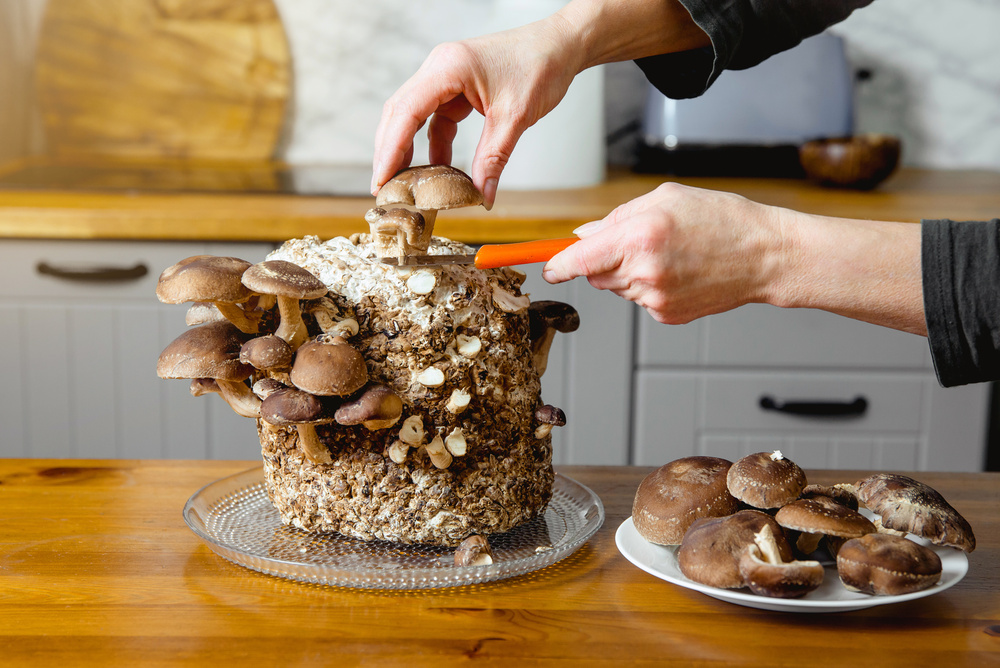If you’re considering engaging in a new hobby that’s both simple and rewarding at the same time, cultivating mushrooms is a worthy option. Growing mushrooms is also something to consider if you love to include them in your diet. The best part about mushrooms is that you can start growing them at home using grow kits available on the market. Generally, cultivating mushrooms is one way to have a handy food source.
A Closer Look At Mushrooms
Mushrooms are categorized as a fleshy form of fungus that develops from spores. For years, the different parts of mushrooms have been utilized in various dishes, especially the edible varieties. Consider growing mushrooms indoors if you want an on-hand supply of mushrooms for your meals.
When developing mushrooms, it’s crucial to be familiar with the basics. Mushrooms grow from mycelium, which is a white filament similar to thread. It’s considered the vegetative component of fungus, while the mushroom itself is the fruit it produces.
Generally, the mycelium develops from spores while growing on an inoculated substrate or spawn. As it develops further on the substrate, pins eventually form into small mushroom caps. The caps reach maturity in around 10–27 days, and as the veil opens, you can harvest them by pulling them at the base.
Some mushrooms you can grow indoors include shiitake, portobello, oyster, button, and enoki, to name a few. However, it’s crucial to note that every variety will require a different growing medium.
Mushroom Growing Tips And Tricks
For those who initially believed mushrooms only grew in the wild, it may be time to change that mindset since you can quickly grow several varieties indoors. Thus, here are several tips and tricks for growing mushrooms successfully at home.

- Provide The Right Conditions And Care For Growth
One of the essential considerations when growing mushrooms at home is a humid, dark location. Ideally, it can be a small space you can readily access to spray with water at least two times a day. Spray or mist water to maintain room temperature. Some suitable areas include the basement, garage, or under sink, not exposed to direct light.
Once the area is ready, the mushroom substrate and mushrooms are typically the only things you need to start. Remember that mushrooms grow from microscopic spores. These spores can grow on various substrates, such as compost, sawdust, straw, and wood.
When providing care for your mushrooms at home, below are several considerations to remember:
- Mushrooms will not require much light since they thrive best in dark environments. Ensure that the area where you’ll grow mushrooms will not be exposed to direct sunlight.
- As for the water requirements, mushrooms don’t require extensive watering, even if they thrive best in humid and moist environments. Ideally, misting or spraying them two times a day works best. Take care not to allow the mushrooms to dry out excessively or drown. Once you see the mushrooms developing into their distinctive form, consider misting around them instead of making direct contact.
- A humid environment is one of the crucial requirements for the proper growth of mushrooms. Remember to maintain a moist environment once the mushrooms enter the fruiting phase.
As you can see, various conditions are crucial to ensure the healthy growth of your mushrooms.
- Choose The Suitable Growing Medium
The stark difference between mushrooms and other plants, such as herbs and vegetables, is they require a specific growing medium, depending on the mushroom type you want to cultivate. For example, white button mushrooms thrive best in composted manure, while shiitake mushrooms prefer sawdust or wood chips. Once your growing medium or substrate is ready, you should place it in a container with a minimum depth of six inches. The adequate space allows your mycelium to develop freely.
- Know The Inoculation Or Growing Methods
Two methods are available when growing or inoculating mushrooms for the first time: mushroom spores or mushroom spawn. If it’s your first time hearing about a mushroom spawn, it’s essentially the seedlings. For beginners, it’s best to go for mushroom spawn since it’s in the form of seedlings where you’ll only need less work to grow them. Later, try the spores method when you can handle growing mushrooms using its seeds.
- Maintain The Ideal Temperature
Most mushrooms cultivated indoors do best at a temperature between 55 and 60 degrees F. However, if you want to speed up the growth, adjust the temperature to around 70 degrees during the initial days. You can achieve this by positioning a heating pad beneath the container to provide warmth.
- Determine The Fitting Time To Harvest Mushrooms
The right time to harvest your mushrooms is once the cap fully develops and unfolds. You can easily pick them out from their base or utilize a small knife when harvesting. After picking all the fully formed mushrooms, you can store them in a refrigerator. Ideally, you can place them in a paper bag for up to two weeks. Growing mushrooms allows you to enjoy an array of edible mushrooms to prepare delicious and healthy dishes.

Final Thoughts
Growing mushrooms indoors is a relatively straightforward process. A successful harvest will ensure you have a continuous food source while enjoying the health benefits mushrooms provide to your diet. Knowing the basics and these insightful tips and tricks will ensure a good head start in cultivating mushrooms at home.






